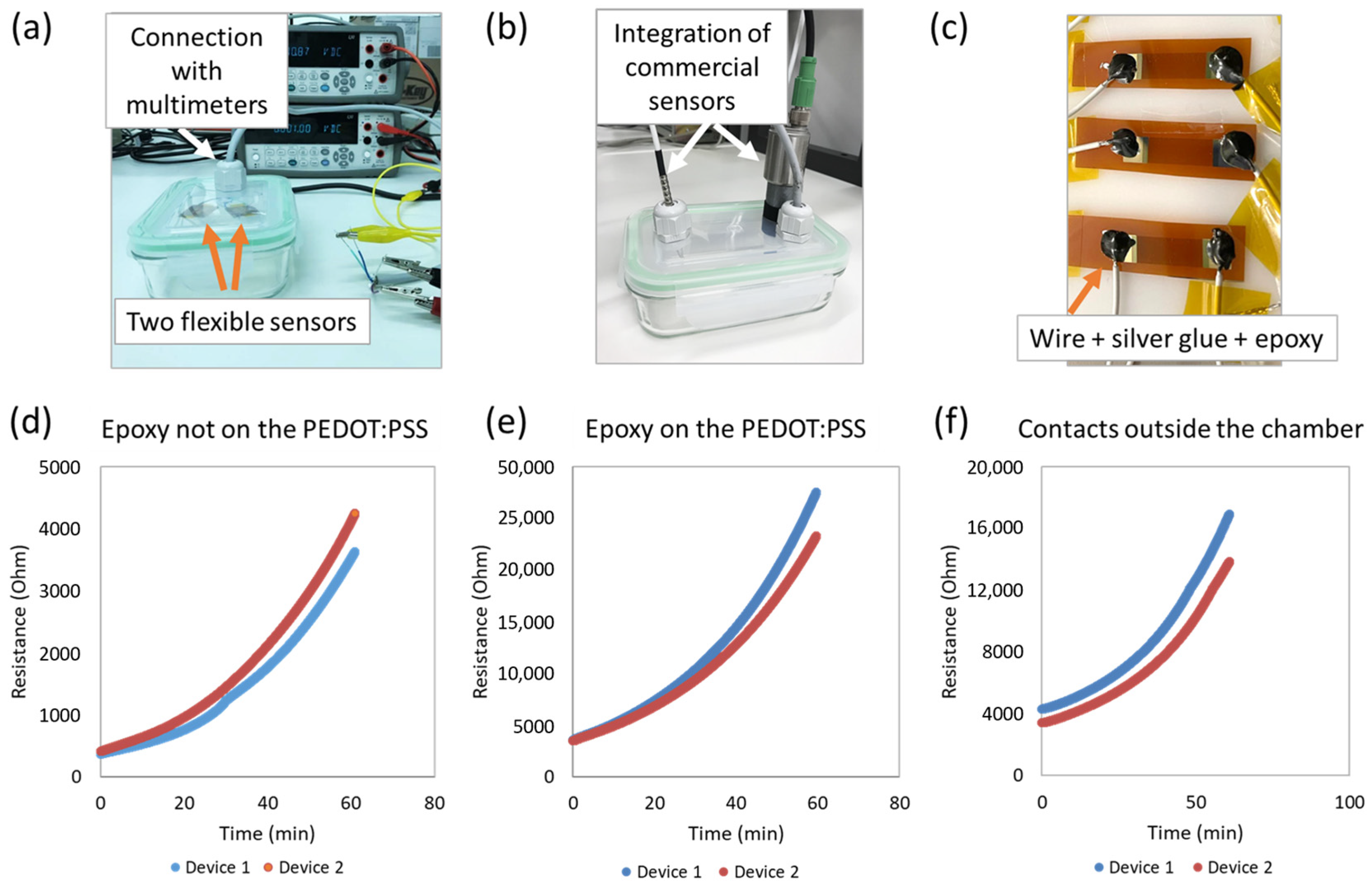Printed PEDOT:PSS Sensing Labels for Real-Time Monitoring of Hydrogen Peroxide Vapors †
Abstract
1. Introduction
2. Materials and Methods
3. Results and Discussion
Author Contributions
Funding
Institutional Review Board Statement
Informed Consent Statement
Data Availability Statement
Conflicts of Interest


Disclaimer/Publisher’s Note: The statements, opinions and data contained in all publications are solely those of the individual author(s) and contributor(s) and not of MDPI and/or the editor(s). MDPI and/or the editor(s) disclaim responsibility for any injury to people or property resulting from any ideas, methods, instructions or products referred to in the content. |
© 2024 by the authors. Licensee MDPI, Basel, Switzerland. This article is an open access article distributed under the terms and conditions of the Creative Commons Attribution (CC BY) license (https://creativecommons.org/licenses/by/4.0/).
Share and Cite
Demuru, S.; Kim, J.; Novák, M.; Hommes, G.; Briand, D. Printed PEDOT:PSS Sensing Labels for Real-Time Monitoring of Hydrogen Peroxide Vapors. Proceedings 2024, 97, 148. https://doi.org/10.3390/proceedings2024097148
Demuru S, Kim J, Novák M, Hommes G, Briand D. Printed PEDOT:PSS Sensing Labels for Real-Time Monitoring of Hydrogen Peroxide Vapors. Proceedings. 2024; 97(1):148. https://doi.org/10.3390/proceedings2024097148
Chicago/Turabian StyleDemuru, Silvia, Jaemin Kim, Martin Novák, Gregor Hommes, and Danick Briand. 2024. "Printed PEDOT:PSS Sensing Labels for Real-Time Monitoring of Hydrogen Peroxide Vapors" Proceedings 97, no. 1: 148. https://doi.org/10.3390/proceedings2024097148
APA StyleDemuru, S., Kim, J., Novák, M., Hommes, G., & Briand, D. (2024). Printed PEDOT:PSS Sensing Labels for Real-Time Monitoring of Hydrogen Peroxide Vapors. Proceedings, 97(1), 148. https://doi.org/10.3390/proceedings2024097148





